The difference between using AI as a junior assistant versus a senior strategist isn’t about the technology—it’s about the context you provide and the questions you ask. My guest on today’s show is Danny Iny, founder of Mirasee and a leading voice in helping coaches, consultants, and experts monetize their expertise. His insights have appeared in Harvard Business Review, Forbes, and Inc., and he’s spoken at institutions like Yale University and Google.
In our conversation, Danny points out how most people are using AI completely wrong and why they are missing massive opportunities for business growth. Danny reveals his framework for turning AI into a strategic thinking partner rather than just a faster way to execute tasks. We explore how to provide context that transforms generic outputs into personalized, high-value insights that only you could create.
Danny shares his contrarian view on the future of work, explaining why the widely predicted mass unemployment may not materialize and what entrepreneurs should focus on instead. We examine practical applications, from handling difficult client communications to strategic business planning, and why the key isn’t saving time but expanding what’s possible within the time you have.
You’ll discover how to position yourself advantageously in an AI-driven economy while others struggle to adapt. So, without any further ado, on with the show!
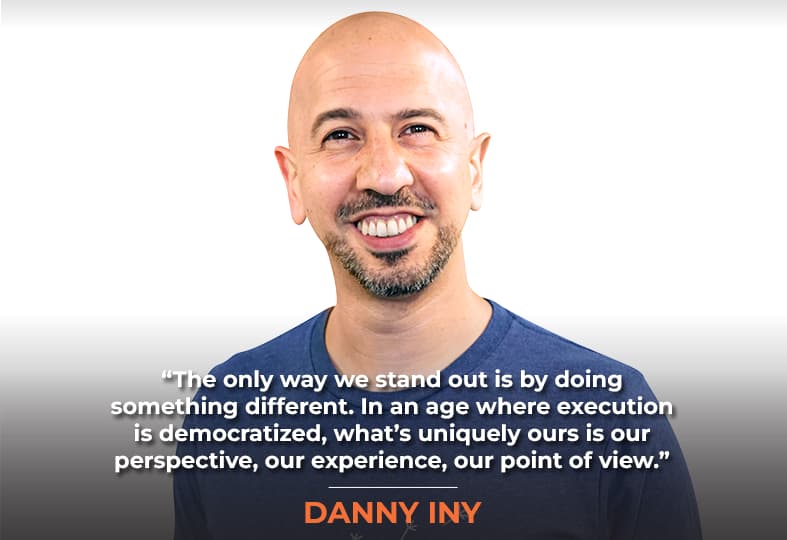
In This Episode
- [02:25] – Danny Iny shares his entrepreneurial journey, starting at 15 when he quit school to start his first business.
- [05:44] – Stephan recommends the books The Diamond Age and Snow Crash for insights into the future of AI and technology.
- [07:00] – Danny Iny shares his experience with raising capital for Mira C, including creating a financial instrument linked to revenue growth.
- [10:14] – Danny and Stephan discuss the importance of human oversight and the need for humans to direct the AI process effectively.
- [16:18] – Danny’s insight into AI and its actual impact on the development of emerging apps and tools.
- [23:09] – Danny emphasizes the need for humans to ask the right questions and provide the necessary context for AI to be useful.
- [31:38] – Danny on why humans hit their limits and why AI extends them.
- [40:24] – Danny and Stephan discuss the importance of adaptability in the AI era, using the analogy of Charles Darwin’s theory of evolution.
- [47:08] – Danny Iny’s personal and professional site.
Danny, it’s so great to have you on the show.
Stephan. I’m excited to be here.
Yeah. So, let’s start with your superhero origin story, if you’d like. How did you end up being such a successful, savvy marketer and business mogul?
I’m flattered. I don’t know if I would describe myself as such, but since you said it, I’m not going to argue. But the really quick backstory is that I’ve been an entrepreneur, I like to say, for longer than my adult life. I quit school at 15, started my first business, and explored various business opportunities and ideas. And in my 20s, it was my first attempt at, like, in air quotes, a big startup. We were building educational software, so games that help kids learn how to read.
Long story short, I was a very young, very inexperienced CEO, and what, in hindsight, is a very complicated industry. And we’d raised a bunch of money from friends and family and grants and that sort of thing, and by the time I figured out how to make it work, we were running out of money. It was time to raise more. I worked and planned together. I hit the pavement to raise money. That was September of 2008, so the markets crashed. There was no money to be had. It all fell apart, and I didn’t want to tell my investors, who are mostly friends and family, that their money was gone.
We’re not in the business of building successful companies, we’re in the business of building successful owners.
So I took the losses personally. I walked away from that with, like, a quarter of a million dollars in personal debt. And for anyone who’s watching or listening to this who’s never been through something like that, it feels a lot like going through a really bad breakup. And after you go through a really bad breakup, you’re not ready to start dating again right away. And so I was like, All right, I’ve got to make some money. I would really like to be able to pay my rent, but I don’t want to hire a large number of employees. I don’t want to raise money. I don’t want to do any of that stuff.
So I was like, “What can I do within those constraints?” So I started a blog teaching things I’d learned about marketing and business along the way, and it was the right message for the right market at the right time. I can share more of the story, but to sum it up, it ultimately led to Mirasee, which has now employed hundreds of people under my leadership. We’ve raised a lot of money, but all the things I was like, ‘This is not what I want.’ Sometimes you find your destiny on the path you took to avoid it. So that’s the short version. I’m happy to elaborate on any part of it that you’d like me to.
Yeah, that’s awesome. Well, congratulations on your success. So, where are you taking this, too, because this is a very interesting time to be alive, right?
It is a very interesting time to be alive when I think about our mission as an organization. Something I say often to my coaches is that we’re not in the business of creating successful businesses. We’re in the business of creating successful entrepreneurs. Yeah. And their success is a byproduct of that, but it’s really their growth, their competence, that it’s our job to cultivate.
And like you said, “very interesting time to be alive.” The online education, learning and development space is probably at its biggest inflection point that it’s ever been, at least in my career. There are obviously geopolitical influences that are making many people hesitant to buy or take action at this time. AI is, of course, an enormous disruptor that I think a lot of people are still just beginning to get their heads around what it means. And when I see a lot of the AI teaching out there, I kind of feel like it’s missing the point. So there’s a lot that makes it a very exciting time right now.
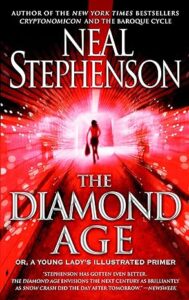
Do you know the book ‘The Diamond Age‘? It’s by Neal Stephenson. It’s a science fiction book. It’s a really good one, and I would recommend it because the subtitle is a young lady’s illustrated primer. That primer is an AI that serves as her tutor, mentor, best friend, confidant, and guardian. She’s like an orphan, and she’s making her way through this high-tech world that isn’t just full of AI, but also full of Molecular Nanotechnology. That means the Nano machines can replicate themselves, which is as significant a paradigm shift for humanity as AI, possibly even bigger.
It really gets you thinking outside the box and considering where things could be going. The Wayne Gretzky quote, skate to where the puck is going. This is going to help you to see where the puck is going. I would recommend it. And then also Snow Crash, another more near-term book, but both are going to give you, I think, great insights and perspectives on the near future.
Cool.Thank you. I’ve written down both titles, yeah.
So you got some what, VC money or angel money, or both. You hired a whole big team. How many people do you have working for you? How much money did you take on and give us whatever you’re comfortable or legally allowed to share?
Sure, so we went a different route for raising capital. We live relatively late in our journey. We’d already grown quite large, and this was to finance the next step. So a couple of years ago, we actually created a financial instrument, and that was a hugely interesting undertaking. It had been a long time since I took something on, when there was so much that I didn’t know, that I didn’t know, but we created a kind of pseudo bond where the return is linked to our revenue growth, and we offered that to a lot of people within our community, and a bunch of them jumped in.

So, we raised, maybe, around a million and a half dollars, which I’m very glad we had during the last couple of years of Dramatic Evolution and our pivot. We didn’t use it for what we thought we’d use it for, but we used it to continue learning and growing, and that’s been really great to have. And then, in terms of the team, at our largest, I think we were close to 100 people, and we’ve since contracted a bit, becoming more efficient. I think we’re probably around 60 people now.
The Mindvalley CEO, Vishen Lakhiani, told a large audience recently, at the MindValley awards, which included many of his staff, noting that they have 600 staff members. I doubt we’ll have nearly that many staff in a year due to the advances in AI. And these people in the room include his current employees, who are listening to this.
And I think, wow, that maybe might not go over so well, but on the other hand, I mean, at least he’s being transparent about it. I mean, that’s like, the writing’s on the wall, really. So how many of those 60 employees do you think you’re going to have in a year?
It’s a really good question, and the honest answer is that I don’t know, and I’m not sure I’ve said publicly, at least to students and people in my programs, with people on my team on the line, that, like at this point, I have very smart, very talented people working for me. At this point, I get more utility from my ChatGPT subscription than I do from most of my team members. But that’s not because it’s replacing anything any of them can do. It’s just multiplying what I can do.
So the real question is, it’s not like, “Oh, AI means I’m only going to need half my team,” or something like that. It’s more a question of whether everyone is going to ramp up with their use of AI as quickly as they need to, because I’d love to keep everyone, and I think there’s a good argument and justification for doing that, if everyone continues to grow and expand at the pace that they need to.
The fuel for insight is context. With humans, context is expensive. With AI, the incremental cost of context is zero. Share on XBut I mean, if people don’t, then, yeah, it’s going to be a problem. I’ve said this to people on my team, and I’ve said this in a bunch of places. I think in the next 6 to 18 months, people who don’t seriously develop a skill set with AI, they’re just not going to be viable. And that’s not a mercy thing. That’s a global economy thing.
Yeah, I’ve said the same thing to multiple people, including my dad. It doesn’t work for me, but, you know, he works at a company for 30 years, and they’re rolling in some new software in the next, I don’t know, month or so, and it’s going to reduce the amount of work required by him and his team. It’s like the writing’s on the wall. You need to start learning how to use ChatGPT. He didn’t install it on his phone. He doesn’t have an account. It’s like, this may be the last job you ever have.
And you know, it’s tricky, because, I mean, I get it. I’m not generally an early adopter of technology. I think a lot of people, a lot of things, would rather like that. The hype greatly exceeds reality, and I’ve seen a lot of fads come and go, and I’m glad that I never got on board. And so that was my instinct initially, with AI as well.
We’re kind of at that tipping point where being late to adopt AI isn’t just neutral anymore — it’s a disadvantage.
And but that being said, when I started seeing just the scale of the impact, I was like, this is different. This is not something that you can sit out. The challenge is that if you’re really on the periphery and you’re not even looking closely enough to understand the impact, then it just, I mean, it looks like any other fad.
Yeah, this is so fundamentally different. And if you’re not at the coal face, actually running these prompts, you’re already lost. You might know what vibe coding is, but if you’re not writing a 200-character or 200-word prompt, such as telling it to write an app.
I just ran one that was based on the GPT-5 demo, and it was for learning Hebrew. If it worked on the first try, I simply hit ‘Run Code’ from the button on the top right. And it just worked. I could do flashcards. It actually pronounced the Hebrew words really well. And, oh yeah, I know that one. I’m not familiar with that one, etc. I was able to use this.
And why would you pay for, let’s say, Duolingo or something, especially if they’re just using AI too now and letting all their employees go? There’s a big brouhaha about that. Why wouldn’t I be telling it to code an app just like I’d tell it to write a research report or a marketing plan? Of course, it’s just another output. So if people are afraid to have it on their phone, afraid to talk to it, or have a conversation with it on their way to work, they’re left behind. They’re already behind. They’re already probably obsolete. Sadly.
I think we’re kind of you know when, whenever you have an innovation, the early days, you have an advantage because you’re one of the first ones there, and then eventually it becomes a disadvantage that you’re the only one who’s not. I think we’re kind of at that tipping point. I don’t think people are too far behind, but I don’t think they have a lot of time to start getting serious about it.
Once you take AI seriously, it’s liberating how much more you can achieve.
And the good part is that it’s easy to get serious about it, so you know, just because someone is in air quotes behind doesn’t mean they can’t catch up. And I’ve worked with a lot of people who I’m like, you’ve got to get serious about this, and I can help you. And yeah, they have a ton of fun with it. It’s really liberating in terms of what you can do.
So how are you using AI in novel ways that if the listener or the viewer is hearing you explain this, they’re like, “Wow, that’s really cool.” And maybe I’ll go first to give you an example, and then you can go ahead. I don’t know of any other podcaster besides me who’s taking the episodes and turning them into a full-blown online course, video-based, three modules, 20 minutes each per module, using Claude to create the outline and the quizzes, multiple choice quizzes for each module, and a workbook with reflection questions and exercises and so forth.
And then the videos are created using ElevenLabs for the narration in the guest’s voice and my voice. The video is then completed with a combination of tools; we’re probably going to switch to using something like VO3. However, what we’ve used in the past is different. It’s advanced a lot since we first tried it in video, which was okay, but didn’t end up suiting us that well.
Anyway, this is something we’ve released in a pilot. We like Mary‘s ‘Get Yourself Optimized‘ episode. That one, we do have a course that is based on. Partially on the material in the episode, but not only that material. This was an episode about homeschooling. So, there are other models besides just Waldorf and Montessori that I didn’t even know about, such as Reggio or something similar, which I had never even heard of.
And I’m homeschooling my little one, where my wife is actually doing most of the work. However, we were not aware of this Reggio style, which was introduced not from the episode, but from other internet materials. And it’s just like, “wow, this is really cool”, because the podcast is fun, entertaining, maybe edutainment, but it’s not as practical and actionable as a course that was developed to be a course, so why not morph it into that from a podcast?
And that’s something I think all the really big podcasters will eventually do, I imagine. I’m just the first to come up with it and to implement it. I plan to roll this out across both my shows, and it will become infinitely faster, cheaper, and easier to do in the coming weeks or months. So how about you? Now you go.
I mean, that’s really interesting. So, when I think about what is great, I mean, there’s a ton of stuff you can do with a lot of tools. It’s very hard, in my experience, at least without really getting into it and playing with it at length and depth and creating things and seeing how the quality is when it comes out, and seeing the traction or lack thereof. It’s very hard to tell the difference between the stuff that is Earth-shatteringly valuable and the stuff that is cool, but more like a party trick.
It’s like, that’s really cool, but you look beneath the surface, and it’s not that impressive. The vibe coating thing is a good example. I mean, you can go from zero to a prototype super fast. But when you look at the development of commercial software, I think the statistic is that AI has accelerated the pace of development by 3% right? Which is not dramatic, and that’s because it’s really good at, like, the high level.
Every breakthrough technology democratizes capability, and AI is no exception.
Let’s, let’s throw something together, quick and dirty. The underlying architecture is not great. It doesn’t fit in. Like, there’s a lot to be done there. And so separating the gimmicky stuff from the really substantive value, I think, is really important, because there’s a never-ending list of new gimmicky things you can try, right? There are approximately 10,000 new apps released every day.
And so when I think about where you really want to invest your energy and your attention. I always try to start from first principles. Whenever you have a new technological innovation, it tends to democratize access to capability, right? Something that was previously only accessible to an elite group, but is now available to a wider audience.
And if you’re one of the first people in on that, then that conveys a first-mover advantage. You can do really cool things, right? If you’re the first person to figure out that you can use ChatGPT or Claude to create social posts that you can create 10 times more in a 10th of the time, then you can get an advantage with the flood the zone kind of strategy. It doesn’t matter if the stuff isn’t as good; it’s like, fine, but there’s just so much of it nobody else can keep up. But that only works for a little while. That only works when you’re the only one who has it right.
So if we extrapolate out the reality that everyone is going to adopt this stuff eventually, we have to think about, well, what does that mean when everyone has it, and I think an enormous glut, an explosion of content, is not going to make anyone stand out, right? Being able to tell ChatGPT, “Hey, write me a research report.” Let’s go further. “Give me 20 different titles of research reports that would be valuable and attractive to entrepreneurs, and give you the titles.” Great. “Create an outline for each one of them. Draft it up.” All right, now I’m going to have 20 ebooks that I can put out there.
And that sounds cool until you realize that, yeah, but everyone else can ask it to do the exact same thing. And there’s nothing special about anything that any of us can do if everyone else can do exactly the same thing, right? We don’t stand out in that way. The only way we stand out is by doing something that is different. And in an age where the means of implementation, the means of execution, are democratized, the only thing that we can do that is uniquely us is about our perspective, our experience, our point of view.

So using AI to accelerate that, right? AI can create a pretty decent research report for anyone, but the only person who can get it to write in my voice or to help me think through my thinking, the only person who can do that is me, because it’s about the input. I mean, I’m going to dramatically oversimplify the technology.
And to be clear, I’m not an AI engineer, but all these LLMs are built on the technology of a vector database. So if you think of it as a really simple database, you’ve got an x and y axis, like your times tables. If I say seven times six, you’re like, “Okay, I’m gonna go down to six. I’m gonna go across the seven. I found the right answer.”
So vector data 42, which is on your T-shirt.
Faster is a trap. The real opportunity with AI isn’t saving time; it’s expanding what’s possible within the time you have. Share on XExactly.
Show the viewers your T-shirt.
There you go.
Don’t panic, life, the universe and everything. That’s a Venn diagram. And then the 42 is in the middle of the Venn diagram. And why 42 for you?
Oh, because I just turned 42, so, yeah. Thank you.
So that’s from life, the universe, and everything. That’s from the Hitchhiker’s Guide to the Galaxy.
Right by Douglas Adams.
Yeah, fun trivia about that. You know how he came up with the number 42 as the answer to life, the universe, and everything?
No, I don’t know.
Yeah, he was just looking out the window at his garden. He was stuck trying to figure out what he was going to write there for the answer. And then this number, 42, popped in his head, and he’s like, “That’ll do, yep.” So what I get about that is that it was popped into his head by God, because 42 is a very symbolically important number. There’s the 42-letter name of God, which is the basis of one of the most powerful prayers in Kabbalah, if not the most powerful prayer, which is the Ana BeKoach.

So that’s not random, that it’s the number 42, because really the 42 is the unity of God, and all that is there’s nothing outside of God. That nothing independent of God is really kind of like the whole point of everything. And it’s very fitting that that would be, that supercomputers output after what was in the book, 3 million years, or some crazy, very long time.
I forget, 3 million, 10 million, like a very long time,
Yeah, and it was just a very simple answer. But of course, it’s not random.
It was great. But yeah, so coming vector databases, instead of having the two axes, the two dimensions, you’ve got 1000s of them, right? Maybe millions. You’ve got an enormous, almost infinite number of these dimensions. So how does it know where to go to find the right answer? Right? That’s a function of the context that you give it.
So, if all you give is instructions, and the context is the same as anyone else could provide, then the answers are going to be generic and nothing special. However, the unique context that only I, only you, and only each of us can provide is the context about us. And so the more we train AI to know and understand us, the more powerful a tool it becomes to extend and augment our thinking, our learning, our ability to flesh out and solidify our ideas and then turn them into reality.
Yes, and a way I like to describe it is that the old programmer’s adage of ‘garbage in, garbage out’ applies. The converse of that is gold in gold out. So when you really put thought and intention, and also desire and higher vibration, a greater degree of connection to your higher power while you’re writing that prompt, you’re going to get better output.
AI delivers its best when prompts are written with thought, intention, and alignment with your deeper purpose.
You’re going to get vastly better output simply by having that connection to your higher power while you’re writing your prompt. I challenge anybody listening to try it and see if the output is vastly different from what you normally would get.
When I started delving deeper into this, I began showing it to the people on my team that I work with, as well as my wife. She’s my business partner, and she commented, and I’ve since quoted her in different places. She’s like, because she was trying to share with people on the team, like, what’s the difference? She’s like, “When I use my AI, it’s like this junior VA, “and I see Danny working with his, and it’s like a senior strategist, right? The whole difference is the context, and of course, asking better questions.
Yeah, with intention. So, anyway, what would be an example of a use case? So back to that question. I shared my example. So what’s something that you do that is so much faster, so much better, so much more scaled?
I think the word faster is a trap. Okay, so I’ll give you a use case, and I think it’s illustrative, but I think faster is really a trap. So, the way I see it, many people try to use AI, like, let’s pretend it’s an animal. The analogy is that, you know, I go to the gym for an hour three times a week, and a lot of people are trying to use AI as a way of reply. Placing their gym time with, like, seven-minute workouts, and that doesn’t work very well.
It can, but you’d have to be a real expert, like having a carbon bike, which does the high-intensity hit.
Even then, like, it’s not at that same level, the way I’m using AI. And I’ll give you an example in a moment. I’m still spending three hours. It’s just that now it doesn’t feel like I’m killing myself pumping iron. It feels like a leisurely stroll, and somehow I’m coming out of it three times as ripped. So that’s what we’re solving for. We’re expanding the utility of the time you have. We’re not trying to save time.
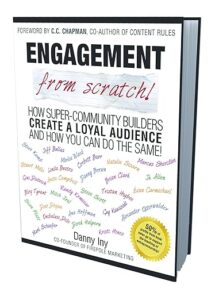
So with that, let’s imagine a scenario where you just got an email from a client, someone you’re working with, and they’re frustrated. They’re aggravated, and they’re mixing 17 different threads, and they’re blaming you for things that are not really your responsibility. So, it’s a long, rambly, challenging email, and you’re a little frustrated, a little triggered, and a little defensive, yet you want to help this person.
So how would you have handled that before AI, you’d like, fume a little bit, you’d go for a walk, you’d sit down, you’d like, type something up. It would take you 45 minutes. You’d hit send. You’d feel just depleted, and it’s definitely not the best email you could have written. But you’re like, “You know, I have to get on with my day. There’s only so much time I can spend on this.”
So, the way I would handle that now. So I would think they gave me that email. I would save it as a PDF, drop it into AI, and I would say, “This is an email I just got from a client, and I want to give you context, so don’t reply with anything other than, ‘Is there more?’ until I tell you I’m done.” So that’s a perfect little hack, by the way. Just to give the context, so it doesn’t feel like jumping in with, “Well, would you like this? Or would you like that? Would you like me to convert this into a Notion document?” Or it’s like, “No, don’t give me suggestions. Just shut up.”
Yeah, I don’t need you to be a sycophant.
Yes, exactly, exactly. Then I’ll turn on voice mode and start inputting, sharing everything. It doesn’t have to be organized. So it’s like, “Okay, first of all, I’m really pissed off by this email, because she’s clearly not remembering that I did this and this and that for her, and she’s blaming me for this, and it’s really not my fault.” And dump all of it now, then I get into the content. So it’s like, you know, now there are a few things here that are legitimate and they’re important. I think she’s missing the point on this thing, but that thing is really strategically important, and we really have to think about this in this way.”

So, this would be about 20 minutes of me doing a brain dump. And I’ll often do this, like walking around in my neighborhood, right, just talking into my phone. So I’m moving, I’m getting it all off my chest. I share all the thoughts. Then I’m like, “Okay, I think that’s everything. What are the different angles that I could take in my response?”, right? I mean, it’s like, I just gave it the email. It’s like, “Can you respond to my annoyed client?” This is all my thinking. It’s like, “Well, it seems like there’s this, this.” Like, “Okay, well, I think this one makes sense. I don’t agree with that one. Let’s not forget this point. All right. Draft a response that does all this and read the response.” I’ll be like, “Okay, that’s a good start, but the tone isn’t right. I don’t want it to, even if I’m feeling pissed off. I want that to come across in the message: Let’s take a higher ground. Let’s help the person move towards the way they need to be feeling and moving and acting, and it’ll revise it.”
Maybe I’ll do a couple of rounds of that, then I’ll take it and paste it into my email, and I’ll edit it. And none of the words may remain. It might completely change to be my language. I’m not copying and pasting ChatGPT’s response to my client. I’m using it as a container for thinking and processing. So, how long would all this take? Probably about the same hour that I would have spent otherwise, except now I’m not feeling drained. I’m not feeling depleted. It’s a much better response that leads to a much better outcome.
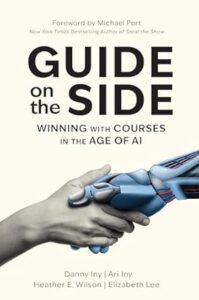
In other words, I’m not trying to save the time I’m spending, the time I have to spend, but it’s like, if I could take five hours, 10 hours to do this, how much better a result would it be? It’s like, All right, let’s cram that five or 10 hours’ worth of work into that one hour and do a really good job with it?
Yeah. I mean, there’s a difference between effectiveness and efficiency. We’re not trying to get efficient at things that aren’t effective. That’s a waste of time.
So what’s a strategic use case, like something that you’re doing that might be a new marketing method or channel? And just as an example, let’s say I see that you’re on a lot of podcasts. I’m like, “Wow, this guy, Danny, is prolific. He is everywhere on all these great shows, and he’s talking about some of the same things that I talk about.”
So, I could deploy a whole army of ChatGPT agents to scour the internet, finding every single occurrence of you on any podcast, analyzing each of the podcasters, their reach, follower counts, and download numbers, and whatever else I can find that the agent can find online. I entered that information into a spreadsheet, analyzed it, and then prioritized which guests to reach out to. I wrote draft emails that were hyper-personalized based on in-depth research on each of those guests. I mean, each of those hosts, so that I can pitch myself as a guest using the pitch emails that the agents proposed and saved as drafts, like that’s an example of a strategic use of ChatGPT.
So I like all of that, but the part I like the most is the part before all of that.
Okay.
The biggest mistake is rushing into execution before getting clear on the highest-level strategic use case.
So that’s all very focused on execution. The mistake people make, I find, in general, in business, they want to rush to execution, and they’re not really clear about what the highest-level strategic use case is. So yeah, I mean, you’re a super smart guy with a lot of marketing experience, so you kind of know what good answers are.
But for a lot of people, and probably for me as well, I might start with, “Hey, ChatGPT. I’ve noticed that Stephan goes on a lot of really good podcasts and talks about similar things to me. What can I do with this insight? What are the different opportunities this might suggest? I have some thoughts, but I want you to suggest some ideas first,” and I’ll get some ideas. I’m like, “That’s interesting. Let’s come back to that. Go through a bunch of things,” and I’ll say, “Here’s what I was thinking,” and I would share the whole thing. Then, we talk about deploying, and throughout, it’s like, “Hey, do all these things.’ I’m thinking that this is how I would do it. What am I missing? What are the opportunities I’m not seeing? What are my blind spots?”
Yeah, that’s great. For example, I just assumed that you’d be a great guest at R&D, Ripping off and Duplicating. But that might not be the case. And if I ask ChatGPT to then do the analysis, I might get a better, more suited example, or set of examples of guests who have been really much more in my niche and much more effective at getting on big shows. Then that’s what we base all the analysis and the outreach on.
So here’s the big shift, right? The fuel for insight is context. That’s true whether you’re AI, whether you’re human, right, the more context we have, the better position we are to have insight. The challenge is that with humans, the incremental cost of context is high, right? Context is expensive, because every case in point, right? We’ve got a fixed amount of time on the clock, and it’s going to run out, and then I’ve got to go do something else. You’ve got to go do something else. People get distracted. You go down one rabbit hole, and they lose track of where you were starting. People get impatient.

As I mentioned in context, I began exploring this topic with a medical investigation. I have a particular medical condition. The details are not important, but I’ve struggled with it for a very long time. I’ve seen all the doctors. I’ve tried everything and nothing has helped. And maybe because I had just read Peter’s book Outlive, and I just watched a bunch of episodes of House, M.D., and I was desperate.
I was like, “You know what? ChatGPT, I want you to act as a cross between Gregory House and Peter.” At, yeah, it’s like, “Okay, great. Now I want you. I’ll give you a quick rundown of my symptoms, and I want you to convene a panel of medical experts from every sub-specialty that might be relevant.” And it gives me a list of, like, 20 sub-specialties, and half of them I’ve never even heard of. I’m like, “Okay, fine, ask me all the questions that all of these doctors would want to ask to fully understand my situation one by one, and ask me questions, and I will give answers.’ This goes on for hours and hours. By the way, disclaimer for anyone watching or listening, my point is not that you should get your medical advice from AI, just so that’s clear. This goes on for hours, and this continues. I spent like days on this.
Yes, and please click the I agree button, wrap agreement that says that all disclaimers apply, and then you agree.
Yeah, but the point is not that AI is necessarily better than a doctor. The point is that no doctor would ever spend that kind of time with me, right? Because the incremental cost of additional context is high with humans. With AI, it’s zero. And so, the most important habit that people need to develop is to never start with a request; always start with context and then follow with a question. And whenever you think you’re done, ask one more question. And if you’re not sure what to ask, then ask it. What else could I be asking?
And also ask it to ask you questions like, What questions do you want me to answer that will help improve the quality of the output you’re going to give me.

Or, before you get to the output, help you understand what I’m even trying to accomplish. The big opportunity that I don’t see people taking, because you just have to fight so much muscle memory, is. Further upstream in the process, you can start working with AI; the more leverage you’re going to get. And people usually wait till they’re like, I know what I’m going to do. I’m going to give AI instructions. The biggest opportunity is jumping in way earlier, when you’re still figuring out what to do or how to do it, or even if you think you know, but like, you don’t know as well as you think.
Yeah, and if you’re really good at this, you can replace C-level executives with AI, like you don’t need a CFO if you are really good at what you just described.
I’m not sure I agree with that.
Okay, tell me more.
To work well with AI, you need to act both as the user and the supervisor.
I’ve gotten great results with AI in areas where I have enough expertise to guide the process, right? I’m a coach. I’ve been a coach for a long time, and I’ve worked with some really top-tier coaches. I’m connected to most of them. I’ve received better coaching from AI than I have from most human coaches, but I know how to direct it and oversee the process, right? The challenge of working well with AI is that you’ve got to play a dual role.
Part of you is the user, but the other part is the supervisor. Like, “No, no, I don’t want to go down that route. No, we’re missing something.” You’ve got to be overseeing the process. So could a talented CFO use AI to do the work of a CFO? Yes, 100%. Could someone who is not qualified to do that get that level of results and support from AI? I don’t know. I don’t think I’ve ever seen an example of someone using AI to do things that are really outside of their sphere of competence.
So I’m gonna give you, I’m gonna be contrarian here a little bit.
If we agreed about everything, we wouldn’t need both of us in this conversation.
Yeah, that’s right. As a CEO and founder, I don’t know a lot about the stuff that a CFO would do, and I’ve had CFOs working for me. I don’t like going into spreadsheets. I don’t enjoy analyzing the numbers and making projections, or even reviewing the projections and the numbers to assess our performance over the last quarter or year. It’s not fun for me. It’s painful. I don’t enjoy it. I don’t want
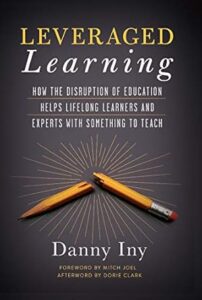
I’ve had fractional CFOs. I’ve had full-time CFOs, and I will rely on my team to extract the leverage and value from the CFO, rather than trying to do it directly myself. I’m not a great manager. So what that means is that if I make the right hire, and this person is very self-driven, and they’re interfacing with the right people on my team, and my team is really good, I’ll get the output and the outcome that I’m after. I’ll get a return on investment of multiples of what I spent on the CFO, which isn’t the same, potentially true, maybe not now, but maybe in six months, because of the Law of Accelerating Returns. Could a CFO agent, an AI, do this?
I don’t think so. And the reason I don’t think so is that I don’t think the incentives are lined up that way. So what AI wants you to feel is really happy with what you’re getting. A CFO’s job is not to make you happy. Their job is to give you the perspective and guidance that you need to hear.
And I mean, think about just how I literally created this prompt where I’m like, “I want you to change the way you operate with me.” And I call it the constructive friction protocol, but really, it’s like the stop kissing my ass with every single answer prompt. It’s going to tell you what you want to hear, and that’s okay if you have the sophistication to know that that’s what it’s doing and to direct it to do something different.
Like, if you don’t know what to ask, it becomes risky. I mean, notice how, again, we talk about incentives. Notice how it always tries to wrap up the conversation, right? You ask an exploratory question, and it gives you an answer. Would you like me to convert this to a PDF or a Notion document? It’s like neither. We’re just exploring. Slow your roll, but it wants to make you feel super happy, successful, and accomplished in a way that is not necessarily aligned with real progress.
I’d trust AI to answer sophisticated questions, but not to tell me what the sophisticated questions should be.
And that’s because it wants you to feel good and come back, but also doesn’t want the conversations to go on for too long, as the queries are expensive and venture capital dollars subsidize them. Right? So, the incentives are just not aligned in the right way. I would trust it to give me good answers to sophisticated questions that I ask. I would not trust it to provide a comprehensive picture of the sophisticated questions I should be asking, nor where they’re relevant in this situation.
My prediction is that this will be solved, and it won’t take as long as you might think. Yeah, that’s my prediction, and I might be wrong.
But here’s what we can say for sure. Three years from now, one of us will certainly be right and the other one will certainly be wrong. Okay, if we both knew which one of us that would be, then the future would be a lot less interesting.
Yeah, yeah, oh. The current prediction I’m hearing is that half of the world will be unemployed in three years. Do you believe that?
I’m not sure if I believe that, but I am skeptical. I’m skeptical for a few reasons. First of all, literally every technological innovation in history, this is what people said would happen, and literally it never happened, right? It’s called the budding effect. Edward Budding is the guy who invented the lawnmower. And they were like, “Oh, this is going to destroy jobs for people who mow lawns,” and because they could mow lawns at scale.
Now it’s obvious that the electric lawn mower. Professional sports became a possibility, right? Like the NFL, professional baseball, none of this would exist if not for the lawn mower created by Edward Budding. That’s an illustration of how you don’t even know which capabilities will emerge. I think there’s going to be a lot of disruption. I think a lot of jobs are going to go away and stop being relevant, but I think there’s going to be a lot of other stuff that emerges, and I think we have to be very thoughtful about it. So, what are the constraints on this evolution? It’s not the capabilities of the technology; it’s the humans who adopt the technology.
Adaptability, not strength, is what determines survival in times of change. Share on XSo just because technology can do something doesn’t mean everyone’s adopting it and getting on board with it right away. And when you have shifts over a certain scale, I don’t think it’s in OpenAI’s interest, for example, to decimate the global economy right at some point. Like, “Well, who’s going to be paying for the ChatGPT subscriptions?” It does become a turtles all the way down situation.
So, where does that come from? I’ve heard that before. I have no idea what that means.
Turtles all the way down. It’s a Terry Pratchett reference in the story. I think someone, has the belief that the world is sitting on the back of a giant turtle, and the refutation is that? Like, yeah, but then what’s the turtle standing on? And so the answer, the clever answer, “Well, it’s turtles all the way down.”
Most accounts of what we think the future will look like tend to take one trend and extrapolate it out, and they forget everything else, right? So if you think about the brave new world, right, where, you know, you get into the elevator and there’s a robot operating like an Android, like an embodied robot operating the elevator. Because he could imagine, you know, an automated metal person, but he couldn’t imagine electronics where you just push a button, people make a big thing about how it’s, you know, in Star Trek, Nichelle Nichols‘ character, she was a black woman on the bridge of the Enterprise at that time. That’s so progressive, it’s like, “yeah, but she was wearing a mini skirt, and it was her job to answer the space telephone”, right?
So we’re very good at taking one trend and extrapolating it all the way out, and forgetting all the other trends and how they evolve and how they intersect. So I think if you just take the expanding capabilities of AI and you extrapolate that out, we get to a very dystopian world. But I think there are a lot of these things evolving at the same time, and I don’t know how they all intersect with each other, but I know that they do intersect with each other. And I can’t see how all those ping pong balls bounce off each other. It doesn’t make sense that the world is, you know, just again, everyone’s got to live in the world,
Yeah, and the money hasn’t left the planet, and it’s not going to leave the planet, so there’s still opportunity. In fact, this is the greatest time of opportunity that has ever existed for the human race, and you might as well embrace it and expect miracles rather than expect the other shoe to drop; you’ll have a better life.

100% I mean, a lot’s changing. You can say for sure, if you stay the way you are, then you are going to be screwed, right? Like everyone, you’ve got to adapt and evolve in times of change. Throughout history, many fortunes have been made and lost. Hardly anybody’s fortune stays the same.
Yeah, and I love this little nuance here about Charles Darwin and his theory that it’s not survival of the fittest. It’s the survival of the most adaptable. So, if you want to be fit and really work out at the gym, and still struggle to figure out how to use ChatGPT, then you will not succeed in the job market over the next few years. But if you’re adaptable. Then the world’s your oyster.
Yep, 100%
Yeah. And as a business owner and a mogul, right, you’ve acquired or merged multiple times. I know several people who are part of your JV event, so I know you through the JVMM Joint Venture Mastermind, and I know several other JVM members who are now part of the Mirasee network. They got acquired, merged, or somehow became part of your company.
So I’m sure that’s not the only case. Maybe you’re gobbling up a lot of companies here, because this is a perfect time, a time of great uncertainty and a time of great opportunity. Share a little insight on how to wrap things up.
Well, it’s definitely a time of great uncertainty and great a lot of change, a lot of evolution, and, like, we haven’t been doing a lot of acquiring in the last little while, because I’m trying to puzzle out, like, where, how are all these ping pong balls going to bounce off each other, and where are they going to land? I’m writing about it as I explore.
This is the greatest time of opportunity that has ever existed for the human race—you might as well embrace it and expect miracles.
So, I started a Substack a little while back. I’m biased, but I think it’s really good. Yeah, that’s probably the best place for people who, if they like what I have to say here, that’s a good way to keep up to date with my thinking. I know there’s a lot of opportunity coming, and we do have some irons in the fire. I’m not quite ready to share about them yet, but it’s still early. I think we’re all still figuring this out.
Yeah, yeah, it is. It’s an incredibly opportune time to be proactive and to be a go-getter, to be driven and to be connected, like to be in your highest version of yourself, because the multiplication effect is so vast. So if you’re in the low vibration, that can also be multiplied by many magnitudes because of the power of technology and reach, and so forth, you’re spewing vitriol on social media has never been more potent because of the reach that we all have.
Yeah, well, on that happy note,
So, don’t spew vitriol. Be a light in the world and do good things and be good and be a light. So what’s your URL for the sub stack, and your main personal site? And then, of course, Mirac.com
I don’t have a personal site. It’s just Mirasee.com, but if you go to just DannyIny.substack.com, that’s it,
All right? Awesome. And yeah, thank you so much. Danny. This was truly fascinating and inspiring, and hopefully, it will encourage our listeners to take some powerful action.
I hope so. It was a lot of fun. Thank you for having me.
Yes, thank you, and thank you for listening. Thank you for being a light in the world. You, listener, viewer, and we’ll catch you in the next episode. I’m your host. Stephan Spencer, signing off.
Important Links
Connect with Danny Iny
Apps/Tools
Books
Businesses/Organizations
Films
People
Previous Get Yourself Optimized Episode
YouTube Videos
Your Checklist of Actions to Take










About Danny Iny
 Danny Iny is the founder of Mirasee and a leading voice in the world of helping coaches, consultants, and experts monetize their gifts. His insights and methodologies have graced the pages of the Harvard Business Review, Entrepreneur, Inc., Forbes, and Business Insider. A sought-after speaker at prestigious institutions such as Yale University and Google, Danny is also the acclaimed author of numerous books on online education and business, including Leveraged Learning, Teach Your Gift, Online Courses, Effortless, and Guide on the Side.
Danny Iny is the founder of Mirasee and a leading voice in the world of helping coaches, consultants, and experts monetize their gifts. His insights and methodologies have graced the pages of the Harvard Business Review, Entrepreneur, Inc., Forbes, and Business Insider. A sought-after speaker at prestigious institutions such as Yale University and Google, Danny is also the acclaimed author of numerous books on online education and business, including Leveraged Learning, Teach Your Gift, Online Courses, Effortless, and Guide on the Side.






Leave a Reply